| Date | Text | |
|---|---|---|
30 Nov 1926

Cholodny-Went model |
Cholodny-Went model (botany) The Cholodny-Went model of tropism in emerging monocotyledon shoots is first proposed by N. Cholodny of the University of Kiev. |
|
30 Nov 1926

Fritz London |
Fritz London (chemistry) Fritz London and Walter Heitler apply quantum mechanics to explain covalent bonding in the hydrogen molecule, which marks the birth of quantum chemistry. |
|
30 Nov 1926

Carbon emissions |
Carbon emissions (environment) Carbon emissions from fossil fuel burning and industry reach one billion tonnes per year. |
|
30 Nov 1926

American |
American (genetics) American biologist Raymond Pearl publishes an influential attack on the basic assumptions of eugenics. |
|
30 Nov 1926

Alfred North Whitehead |
Alfred North Whitehead (mathematics) Publication of the 2nd edition of Principia Mathematica by Alfred North Whitehead and Bertrand Russell, one of the most important and seminal works in mathematical logic and philosophy. |
|
30 Nov 1926

António Egas Moniz |
António Egas Moniz (medicine) António Egas Moniz develops cerebral angiography. |
|
30 Nov 1926
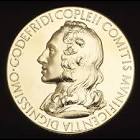
Copley Medal |
Copley Medal (awards) Copley Medal: Charles Sherrington |
|
30 Nov 1926
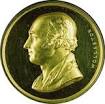
Wollaston Medal |
Wollaston Medal (awards) Wollaston Medal for Geology: William Whitehead Watts |
|
19 Jan 1927

Carl Gräbe |
death Carl Gräbe Carl Gräbe (born 1841), German chemist. |
|
29 Jan 1927

Lewis Urry |
birth Lewis Urry Lewis Urry (died 2004), Canadian inventor of the long-lasting alkaline battery. |
|
09 Feb 1927

Charles Walcott |
death Charles Walcott Charles Walcott (born 1850), American paleontologist. |
|
23 Feb 1927
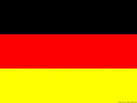
German |
German (physics) German theoretical physicist Werner Heisenberg writes a letter to fellow physicist Wolfgang Pauli in which he describes his uncertainty principle for the first time. |
|
14 Mar 1927

Woman engineer |
Woman engineer In 1927, the first woman in the US to be elected to the American Society of Civil Engineers was Elsie Eaves, who became an associate member. |
|
16 Mar 1927

Vladimir Komarov |
birth Vladimir Komarov Vladimir Komarov (died 1967), Russian cosmonaut on Soyuz 1. |
|
01 Apr 1927
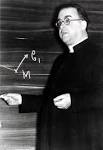
Georges Lemaître |
Georges Lemaître (physics) Abbé Georges Lemaître publishes in the Annales de la Société Scientifique de Bruxelles "Un Univers homogène de masse constante et de rayon croissant rendant compte de la vitesse radiale des nébuleuses extra-galactiques" proposing the theory of the expansion of the Universe, deriving what will become known as Hubble's law, making the first estimation of what will become called the Hubble constant, and proposing what becomes known as the Big Bang theory of the origin of the Universe, which he calls his 'hypothesis of the primeval atom'. |
|
10 Apr 1927

Marshall Warren Nirenberg |
birth Marshall Warren Nirenberg Marshall Warren Nirenberg (died 2010), American biochemist and geneticist; recipient of Nobel Prize in Physiology or Medicine. |
|
26 Apr 1927

Anne McLaren |
birth Anne McLaren Anne McLaren (died 2007), English developmental biologist. |
|
29 Apr 1927

Walter Thirring |
birth Walter Thirring Walter Thirring (died 2014), Austrian mathematical physicist. |
|
02 May 1927
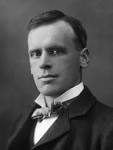
Ernest Starling |
death Ernest Starling Ernest Starling (born 1866), English physiologist. |
|
01 Jun 1927

Ye Shuhua |
birth Ye Shuhua Ye Shuhua, Chinese astronomer. |
|
01 Jul 1927
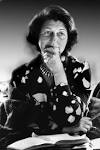
Nicole Grasset |
birth Nicole Grasset Nicole Grasset (died 2009), Swiss-French medical virologist and microbiologist-epidemiologist. |
|
07 Jul 1927

Magnus Gösta Mittag-Leffler |
death Magnus Gösta Mittag-Leffler Died 7 Jul 1927 at age 81 (born 16 Mar 1846). Swedish mathematician who founded the international mathematical journal Acta Mathematica and whose contributions to mathematical research helped advance the Scandinavian school of mathematics. Mittag-Leffler made numerous contributions to mathematical analysis (concerned with limits and including calculus, analytic geometry and probability theory). He worked on the general theory of functions, concerning relationships between independent and dependent variables. His best known work concerned the analytic representation of a one-valued function, this work culminated in the Mittag-Leffler theorem. |
|
29 Jul 1927
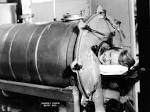
Iron lung |
Iron lung In 1927, the first iron lung (electric respirator) was installed at Bellevue hospital in New York for the post war polio epidemic. The first iron lung was developed at Harvard University by Phillip Drinker and Louis Agassiz Shaw built with two vacuum cleaners. The iron lung is a negative pressure machine which surrounds the patient's body except for the head, and alternates a negative atmospheric pressure with the ambient one, resulting in rhythmic expansion of the chest cage (and thus inhalation) in response to the negative extra thoracic pressure. During periods of ambient extrathoracic pressure, the lungs deflate. This type of machine is rarely used today. |
|
29 Jul 1927

Gerald Westbury |
birth Gerald Westbury Gerald Westbury (died 2014), English cancer surgeon. |
|
02 Aug 1927

Gabriel Horn |
birth Gabriel Horn Gabriel Horn (died 2012), English biologist. |
|
03 Aug 1927

Edward B. Titchener |
death Edward B. Titchener Edward B. Titchener (born 1867), American structuralist psychologist. |
|
13 Aug 1927

James Oliver Curwood |
death James Oliver Curwood James Oliver Curwood (born 1887), American novelist and conservationist. |
|
15 Aug 1927

nbsp;Bertram B. Boltwood |
death nbsp;Bertram B. Boltwood Died 15 Aug 1927 at age 57 (born 27 Jul 1870). Bertram Borden Boltwood was an American chemist and physicist whose studied the radioactivity of uranium and thorium, and their resulting products, which laid a foundation for the concept of isotopes. Boltwood traced each “radioactive series” of radioactive elements in rocks as they sequentially disintegrated into other isotopes or elements. He noted (1905) that the lead, a stable element, always found in such ores, was apparently the ending product of radioactive decay. Since each step in the decay occurs with a known half-life rate, he proposed (1907) that the ratios of the original radioactive elements to their various decay products could be used for dating rocks. Thus, with these measurements of the composition of such ores in the earth's crust, the age of the planet could determined. He estimated 2.2 billion years. Overwork, stress and depression led to suicide. |
|
04 Sep 1927
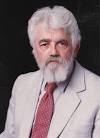
John McCarthy |
birth John McCarthy John McCarthy (died 2011), American computer scientist and cognitive scientist. |
|
07 Sep 1927
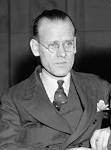
Philo Farnsworth |
Philo Farnsworth (technology) Philo Farnsworth's electronic image dissector television camera tube transmits its first image at his laboratory at 202 Green Street in San Francisco. |
|
14 Sep 1927

Julian Sochocki |
death Julian Sochocki Julian Sochocki (born 1842), Polish-born mathematician. |
|
30 Sep 1927
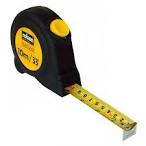
Metre |
Metre In 1927, the 7th Conférence Générale des Poids et Mesures (CGPM) slightly modified the definition of the metre. It was still defined as the distance between two lines on the International prototype metre, but it was now specified that it should be supported horizontally on two cylinders of less than 1 cm diameter, placed symetrically, and 571 mm apart. |
|
01 Oct 1927
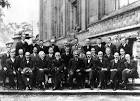
Solvay Conference |
Solvay Conference (physics) The fifth Solvay Conference meets in Brussels to discuss the newly formulated quantum mechanics. Albert Einstein attacks the theories of Niels Bohr and Werner Heisenberg. |
|
02 Oct 1927

Svante Arrhenius |
death Svante Arrhenius Svante Arrhenius (born 1859), Swedish winner of the Nobel Prize in Chemistry. |
|
27 Oct 1927

Mikhail Postnikov |
birth Mikhail Postnikov Mikhail Postnikov (died 2004), Soviet mathematician, known for his work in algebraic and differential topology. |
|
05 Nov 1927
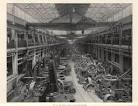
Westinghouse Electric and Manufacturing |
Westinghouse Electric and Manufacturing (technology) Completion of a bridge by Westinghouse Electric and Manufacturing in Turtle Creek, Pennsylvania, the world's first railroad bridge of wholly welded construction. |
|
12 Nov 1927
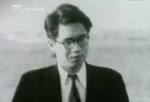
Yutaka Taniyama |
birth Yutaka Taniyama Yutaka Taniyama (suicide 1958), Japanese mathematician |
|
13 Nov 1927

Holland Tunnel opened |
Holland Tunnel opened In 1927, the Holland Tunnel opened for vehicular traffic as the first twin tube subaqueous vehicular tunnel in the U.S. It joined Jersey City, N.J. and New York City, N.Y. The day before, after an opening ceremony, in the next hour 20,000 people walked the 9,250 feet length of the tunnel from shore to shore, of which 5,480-ft runs under the river. Named after its engineer, Clifford Holland, the tunnel carries 1,900 vehicles per hour. The air in the tubes is changed 42 times an hour, at the rate of 3,761,000 cubic feet per minute. The first subaqueous highway single tube tunnel in the U.S. was the 1,520-ft long Washington Street Tunnel beneath the Chicago River in Chicago, Illinois, which was first authorized 17 Jul 1866, though it did not carry automobile traffic until 1911. |
|
20 Nov 1927

Kikuo Takano |
birth Kikuo Takano Kikuo Takano (died 2006), Japanese poet and mathematician. |
|
12 Dec 1927

Robert Noyce |
birth Robert Noyce Born 12 Dec 1927; died 3 Jun 1990 at age 62. Robert Norton Noyce was an American engineer and inventor (1959), with Jack Kilby, of the integrated circuit, a system of interconnected transistors on a single silicon microchip. He held sixteen patents for semiconductor devices, methods, and structures. In 1968, he and colleague Gordon E. Moore cofounded N.M. Electronics, which later was renamed Intel Corporation. Noyce served as Intel's president and chairman (1968-75), then as vice chairman until 1979. |
|
24 Dec 1927

Vladimir Bekhterev |
death Vladimir Bekhterev Vladimir Bekhterev (born 1857), Russian psychologist. |
|
27 Dec 1927

George Streisinger |
birth George Streisinger George Streisinger (died 1984), Hungarian-born molecular biologist; first person to clone a vertebrate. |
|
29 Dec 1927

Anak Krakatoa |
Anak Krakatoa In 1927, Krakatoa began a new volcanic eruption on the seafloor along the same line as the cones of previous activity. By 26 Jan 1928, a growing cone had reached sea level and formed a small island called Anak Krakatoa (Child of Krakatoa). Sporadic activity continued until, by 1973, the island had reached a height of 622 ft above sea level. It was still in eruption in the early 1980s. The volcano Krakatoa is on Pulau (island) Rakata in the Sunda Strait between Java and Sumatra, Indonesia. It had been quiet since its previous catastrophic eruption of 1883. That threw pumice 33 miles high and 36,380 people were killed either by the ash fall or by the resulting tidal wave. The only earlier known eruption was in 1680, and was only moderate. |